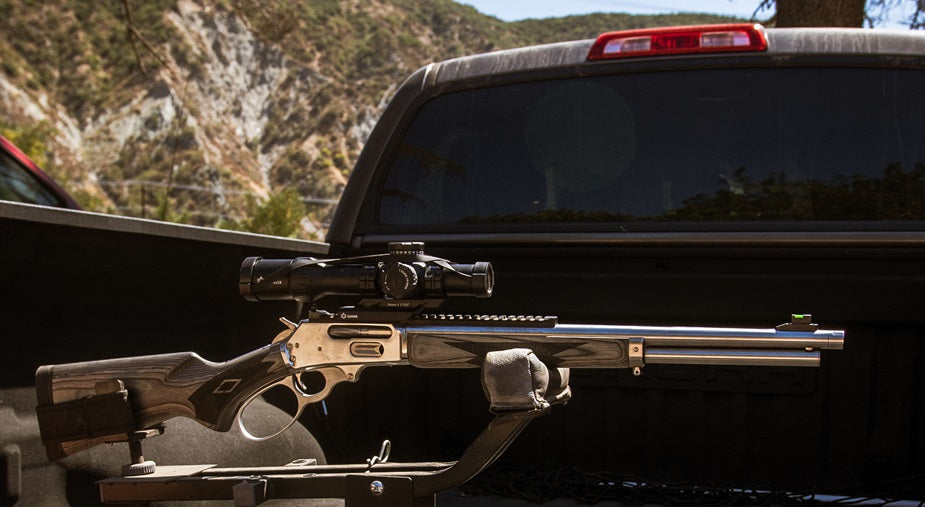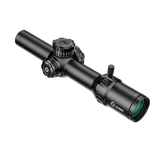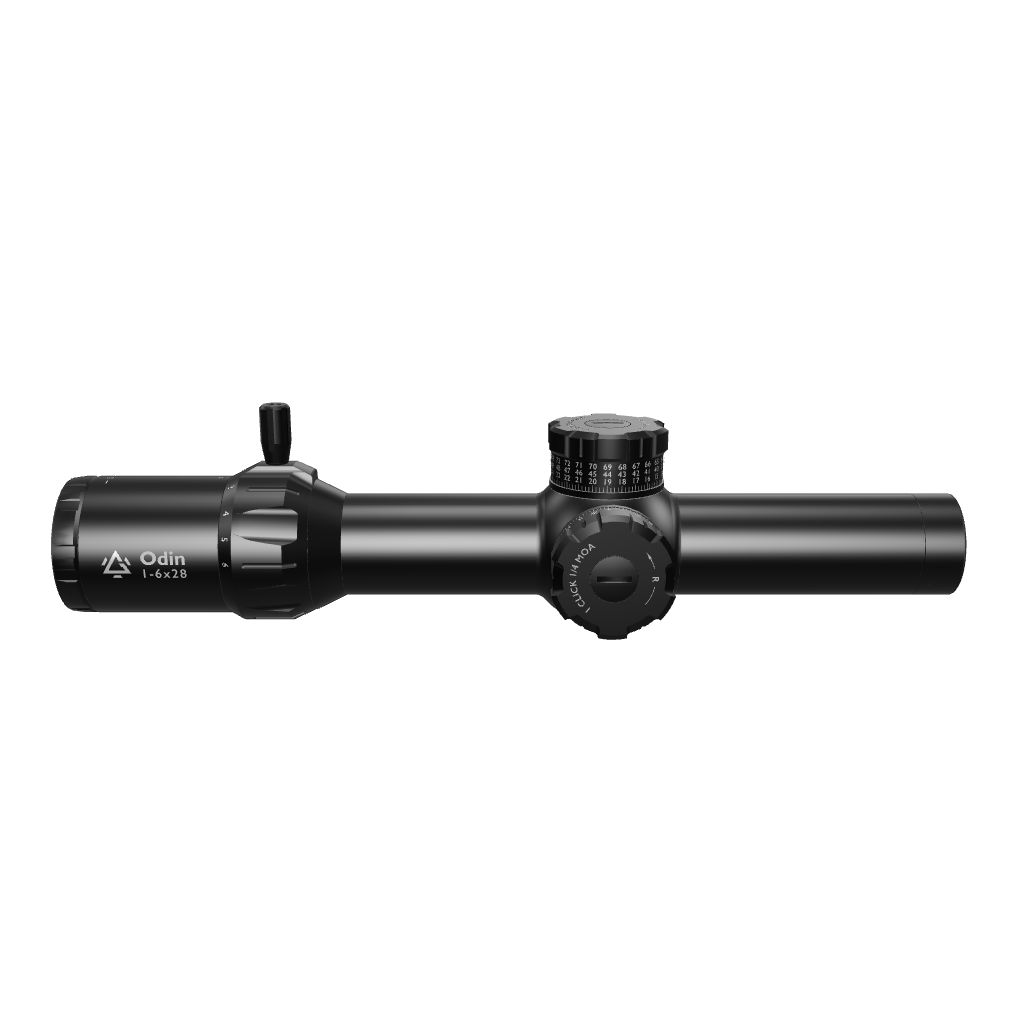5 PRACTICAL TIPS TO PREPARE YOUR LPVO FOR WINTER SHOOTING
Most LPVOs are ruggedly built, and they can be dependable in almost any kind of weather, so taking your scope for a hunt during this coming winter should not be a problem. However, like most rifle scopes, there is a limit to the degree of cold and heat a Low Power Variable Optic (LPVO) can take. Also, apart from the cold temperatures, winter presents some particular changes and challenges that may not bode too well for your scope.
This is why you must take smart measures to protect your scope before heading out in the winter and after your return from your shooting adventure. Fortunately, most of these protective measures are really easy and inexpensive.
Let's discuss some practical tips to help you keep your LPVO safe and protected in the winter, even as you get the most out of it.
1. Prevent Fogging
The first risk with shooting in winter is that your scope might get fogged up. Of course, the likelihood might vary depending on how cold winter gets in your area, but winter generally means changes in temperature and humidity, which can trigger condensation on or inside your optic. Here’s a breakdown of why and how this happens.

i. Winter Means Temperature Changes
Let’s be clear: the gradual onset of winter does not directly pose a threat to your scope: the temperature change is gradual and happens over a couple of months. What you have to watch out for is sudden and dramatic changes in temperature, which might spark the process of condensation.
Whenever you move your LPVO from a warm environment (like a vehicle or indoors) to the cold outdoors in winter, a quick temperature fluctuation happens. The rapid temperature drop can cause moisture in the air to condense on the external lenses.
- The same happens in reverse: bringing a cold optic into a warm space. The humidity in the air triggers condensation on the lens surface.
- If the LPVO’s internal seals are compromised, the temperature changes might also cause moisture trapped inside to condense on the internal glass.
ii. There is More Exposure to Humidity and Water
Winter air is more likely to have high humidity, especially if your state is snow-prone. If snow or moisture lands on your lens, it will eventually start to melt, which can create condensation on the lens surface.
Snow or rain poses another threat to your LPVO when it collects around the seals. Seals are normally designed to keep out moisture, but if snow or rainwater is allowed to settle on the seal for a long time, it might eventually find a way in.
Besides, your seals may be weak or damaged if you have used the scope for a long time in wet, snowy conditions.
iii. The Seals Are More Likely to Get Weakened
Most LPVOs have adequate features to protect the interior compartments from water infiltration. However, when you shoot in the winter, even the highest-quality, nitrogen—or argon-purged LPVOs may develop minor seal issues over time. If care is not taken, the weakened seals will eventually allow some moisture to enter.
Any moisture in your LPVO is already a problem on its own. However, in winter, this trapped moisture can become more problematic. The extreme cold could cause it to condense, resulting in lens fogging or worse.

iv. Inadequate Drying or Storage Practices
In winter, there is an additional risk of lens fogging, especially if you fail to take extra measures to care for and store your LPVO properly. After exposure to snow or rain, moisture can become trapped if your rifle scope is not properly dried and/or stored in a low-humidity environment.
The next time you pick it up in cold weather, you will notice it's all fogged up.
Tips to Prevent Fogging
An effective way to prevent your scope from fogging up during winter is to keep it covered when not in use. This is precisely what your lens caps are for. Lens caps (or any other type of scope cover) protect the lenses from temperature changes, moisture, and snow.
The caps will also help reduce the risk of fogging when moving between indoor and outdoor environments.
Another tip to minimize the risk of internal fogging on your rifle scope is to allow some time for the scope to adjust to changes in temperature. When moving from a warm place (like a vehicle) to the cold outdoors, give the LPVO time to adjust to the new temperature before using it.
Use Anti-Fog Coatings or Wipes. To prevent your lenses from fogging up too easily, you can apply a high-quality anti-fog solution or clean them with pre-moistened anti-fog wipes. This will help reduce fog buildup on the external lenses.
2. Do Moisture Control
Proper care after use is crucial in winter. Remember that the risk of moisture damage carries on even after you store your scope, especially if you store it in a humid or snowy environment. So, it is recommended that you take some quick measures to keep it dry every time you use it. You can any (or preferably both) of these:
- Dry out snow and moisture properly every time you use the scope. After exposure to snow, wipe the optic dry with a microfiber cloth. Avoid letting moisture sit on the lenses: it can freeze and damage the lens coatings.
- Pack desiccants in the storage case as an extra precautionary measure. Carefully placed silica gel packets will help absorb moisture in the LPVO’s storage case.
3. Manage Cold Weather Effects on Your Optic
The winter cold also affects the shooting experience and how your LPVO functions. Some settings will not be the same in winter and summer, and the cold might have an effect on some of the exterior mechanical components of your LPVO.

Adjust Your Zoom and Focus Settings
Before going out into the winter cold, adjust the zoom and focus on your rifle scope first. The winter might be so cold that the moving parts on your LPVO start to stiffen up. Set the zoom and focus where you’ll likely need them so you don’t have to do too much handling in the cold.
Wear Thin Gloves for Precision
Thicker winter gloves can make it difficult to adjust turrets and zoom rings on your rifle scope. Consider thin, insulated gloves for better dexterity in the winter. Gloves with grip-enhancing features also work and make handling easier.
4. Battery Care for Illuminated Reticles
If, like most modern rifle scopes, yours has an illuminated reticle, then you have an additional component to worry about when heading out in the winter: batteries. Cold weather drains batteries faster, so you might want to keep spare batteries in an inner pocket where they’ll stay warm and last longer.
Also, try to minimize the use of illumination features when you are shooting in the winter. Turn it off whenever you don't need it.
Under better light conditions, save battery life by using the optic without the illumination feature.
5. Regular Maintenance
Inspect for Damage After Exposure to Cold. Winter conditions can be tough on gear, so check your LPVO after extended use in snow or cold. Look for any moisture, cracks, or other signs of damage.
Lubricate External Moving Parts Sparingly: If your LPVO has turrets or moving parts that become stiff in cold weather, use a very small amount of cold-weather-friendly lubricant. Avoid over-lubricating, as excess oil can attract dust or freeze in extreme cold.
With these winter adjustments, you’ll be better prepared for the unique challenges cold weather brings to LPVO use.
Start With the Right LPVO
It is said that “prevention is better than cure,” and that also applies to LPVOs and rifle scopes. Of course, the above tips will make a great difference, but at the end of the day, you need a scope that is built to support winter conditions. This is where Gogunnr comes in.
Gogunnr is supplying some of the best-quality LPVOs this year. The Odin LPVOS launched earlier this year received an immensely positive response from the shooting community. Experts and shooters praise the quality and clarity of the lenses (made of German Schott glass), the quality of the material (7075 Aluminum Alloy), the locking turrets, the zero-stop feature, and other main features of its three flagship LPVOs.
Then there’s Gunnr’s customer support, which always presents more valuable information like the points mentioned in this blog. Gunnr provides a lifetime warranty for its products, and the team is dedicated to giving you all the assistance you need in your shooting endeavors.
Check out Gunnrs’s scopes; you will like what you see!







